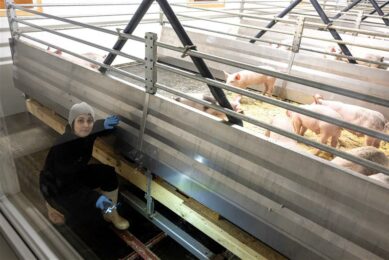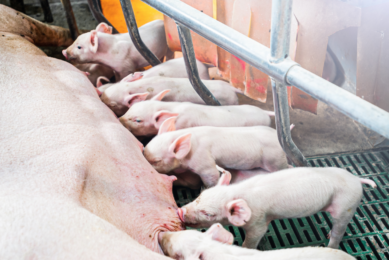Swedish surprise – ESBLs and the environment

In the latest edition of SVARM (2015) they show the link between ESBLs is between man and the environment, not farm animals or food.
Over the years, I think I have been brainwashed that the use of antimicrobials in farm animals is bad, especially pig use, and that if resistant bacteria do not contaminate the meat then the contaminated environment is to blame. All the manure we spread over farmland then washes into rivers and then contaminates the drinking water and also spreads to man that way. I obviously have a guilt complex.
You can imagine my surprise when in the latest edition of the Swedish report, SVARM 2014 (2015) on the ‘Consumption of antibiotics and occurrence of antibiotic resistance in Sweden’ that it highlights that this is not the case at all, when it comes to the spread of extended spectrum beta-lactamase (ESBL) resistance associated with 3rd and 4th generation cephalosporin use in E. coli. They showed that carriage of ESBL genes in the general community population, sewage water and the environment were approximately 90% the same. I would expect the sewage water from man to be similar but the spread to or the contamination of the environment to such an extent was a real surprise.
The Swedes took samples of E. coli, which carried ESBLs (cephalosporin resistance) from imported foods, their home produced foods and farm animals. These samples were compared with those taken from the healthy human population, patients with blood-borne infections (clinical cases usually in hospitals), sewage water and the environment. Cephalosporins are not used in food animal medicine in Sweden, although, interestingly, there were high levels of resistance found in broiler chickens and subsequently chicken meat (see Swedish foods bar) from imported breeding stock from the UK. Interestingly, these are mainly classed as containing a bla-cmy-2 gene, which is also called AmpC resistance and is also beta-lactamase inhibitor resistant (clavulanic acid, sulbactam) so has been of major concern. Swedish food bares little similarity to the human community carriers and farm animal resistance is also very different from environmental contamination, which is almost identical to human sewage water.
In the study, they also found that only 7 of the E. coli from farm animals and 5 from imported food were identical types to those found in 4 healthy carriers and 1 severely ill patient. This represents on a transmission rate basis that the number of clinical cases potentially caused by ESBL containing E. coli from food/farm animals = 21.2 cases or an infection rate of 0.00022%/year on a population basis. This represents 0.22 people /100,000 population out of potentially 85 people, who would normally become infected/100,000 population, i.e. an extremely low infection rate.
Man produces between 100-200g of faeces/day and Wikipedia states it is 128g/day. The 9.6 million Swedish human population therefore produce at least 440 thousand tonnes of faeces, full of bacteria, which need to be processed and spread, but where? In the UK, I live near the river Thames and there are several sewage plants along its length. The solids are also spread on land like animal waste and the liquids often appear to go down the river. Presumably, this is carrying E. coli with ESBLs. Hospital waste would potentially be more hazardous as it is coming from humans with possibly carbapenemase resistant bacteria too.
I can understand concern in the past over lakes where pig farms allowed their waste to go straight into them and tetracycline resistance was found. Pig muck etc if put on the land is usually pretty smelly and not many families want to go to play in those fields thus reducing environmental contact. I think we need to consider what happens to human waste and how that is managed more closely to avoid the spread of ESBLs. Have you had any experiences?











